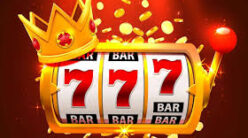Passports serve as the ultimate gateway to international fake and real marriage certificate travel, granting individuals access to foreign lands and experiences. However, in the realm of global mobility, the proliferation of counterfeit passports poses a significant threat to security and integrity. Understanding the key differentiators between fake and real passports is paramount in safeguarding national borders and preventing illicit activities. This article delves into the intricacies of identifying fake passports and underscores the importance of stringent authentication measures.
The Anatomy of a Genuine Passport: Genuine passports are meticulously crafted documents imbued with various security features to deter counterfeiting attempts. These features often include:
- Watermark: Authentic passports typically feature a watermark, visible when held up to light, showcasing intricate designs or national emblems.
- Security Thread: Embedded within the passport’s pages, a security thread adds an additional layer of authentication, often bearing the passport holder’s information.
- Microprinting: Tiny text or symbols, barely discernible to the naked eye, are strategically placed throughout genuine passports, challenging replication efforts.
- Holograms: Advanced holographic images or foil stamps are integrated into the passport design, enhancing visual authentication.
- Machine-Readable Zone (MRZ): The MRZ, located at the bottom of the passport’s bio-data page, contains encoded information that can be scanned and verified by border control systems.
Identifying Fake Passports: Despite the sophistication of security measures, counterfeiters continually devise methods to replicate genuine passports. However, several telltale signs can help discern fake passports from their authentic counterparts:
- Inconsistencies in Printing: Fake passports often exhibit irregularities in printing quality, including blurred text, pixelation, or mismatched fonts.
- Lack of Security Features: Counterfeit passports may lack essential security features present in genuine documents, such as watermarks, holograms, or embedded security threads.
- Incorrect Information: Discrepancies in personal details, such as misspelled names, incorrect birthdates, or inconsistent photo IDs, are indicative of a fake passport.
- Unusual Materials: Counterfeit passports may be made from inferior materials or display signs of tampering, such as visible glue residue or uneven lamination.
- Suspicious Behavior: Individuals presenting fake passports may exhibit nervousness or hesitation when questioned by authorities, raising suspicion during the authentication process.
The Implications of Counterfeit Passports: The proliferation of fake passports poses multifaceted threats to national security and global safety. From facilitating human trafficking and illegal immigration to enabling terrorist activities and financial fraud, counterfeit passports serve as enablers of transnational crime networks. Moreover, the erosion of trust in passport authentication systems undermines border control efforts and jeopardizes international cooperation in combating illicit activities.
Conclusion: Distinguishing between fake and genuine fake and real marriage certificate passports is a critical endeavor in upholding the integrity of international travel and safeguarding national security. By familiarizing oneself with the security features of authentic passports and remaining vigilant for signs of counterfeiting, individuals and authorities can mitigate the risks posed by fake passports and preserve the sanctity of border control mechanisms. Moreover, concerted efforts to enhance passport authentication technologies and strengthen international cooperation are essential in combating the proliferation of counterfeit passports and ensuring the safety and security of global citizens.





